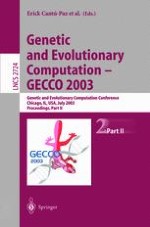2003 | OriginalPaper | Buchkapitel
Structural and Functional Sequence Test of Dynamic and State-Based Software with Evolutionary Algorithms
verfasst von : André Baresel, Hartmut Pohlheim, Sadegh Sadeghipour
Erschienen in: Genetic and Evolutionary Computation — GECCO 2003
Verlag: Springer Berlin Heidelberg
Enthalten in: Professional Book Archive
Aktivieren Sie unsere intelligente Suche, um passende Fachinhalte oder Patente zu finden.
Wählen Sie Textabschnitte aus um mit Künstlicher Intelligenz passenden Patente zu finden. powered by
Markieren Sie Textabschnitte, um KI-gestützt weitere passende Inhalte zu finden. powered by
Evolutionary Testing (ET) has been shown to be very successful for testing real world applications [10]. The original ET approach focuses on searching for a high coverage of the test object by generating separate inputs for single function calls.We have identified a large set of real world application for which this approach does not perform well because only sequential calls of the tested function can reach a high structural coverage (white box test) or can check functional behavior (black box tests). Especially, control software which is responsible for controlling and constraining a system cannot be tested successfully with ET. Such software is characterized by storing internal data during a sequence of calls.In this paper we present the Evolutionary Sequence Testing approach for white box and black box tests. For automatic sequence testing, a fitness function for the application of ET will be introduced, which allows the optimization of input sequences that reach a high coverage of the software under test. The authors also present a new compact description for the generation of real-world input sequences for functional testing. A set of objective functions to evaluate the test output of systems under test have been developed. These approaches are currently used for the structural and safety testing of car control systems.
